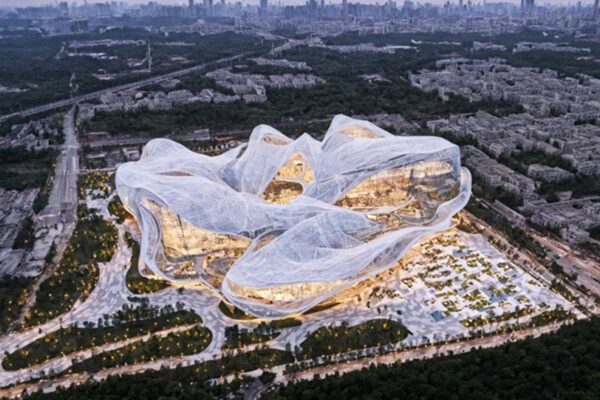From prompts to possibilities: How we used AI to create impressive architecture from paper
An AI-driven exercise to redefine design, merging technology and creativity for innovative architectural concepts.

With AI becoming an increasingly influential tool, we’ve embraced it as an opportunity to push creative boundaries and reimagine architectural possibilities. Recently, Creative Lead Daniel Lewis introduced a creative exercise as a way to explore the role of AI in the design process and to rethink how technology and creativity can inspire new architectural ideas. Using a simple object as a starting point, the exercise aimed to challenge and expand the boundaries of how technology and creativity meet.
The exercise brought the entire team together to dive into AI, all working from a single shared base image—a crumpled piece of tissue paper—to create imaginative concepts. Inspired by Tim Fu, we focused on exploring how prompts in LookX could shape the creative outcome. While other platforms like Midjourney and DALL·E offer their own alternative approaches to generative design, this challenge was about pushing the possibilities within LookX, which is trained specifically on architecture models.

The brief was straightforward and open-ended – over the course of 10 days, using LookX, an AI platform that generates images from text prompts, and the same visual prompt of crumpled paper, our team aimed to create an AI-generated image of a building with complete freedom to experiment with prompts, style references, and creative direction.
Here’s what we learned: a well-crafted prompt, a combination of elements, solutions, and inputs are more than just words – it’s a thoughtful mix of elements. Each final image reflects numerous iterations, adjustments, and creative inputs, each telling its own story and shaping how the building design comes to life.
Beyond image generation, the process acts as a disrupter to traditional processes, focuses the mind at a very early stage and raises many questions which can significantly alter the direction of a project. It showed us how AI can open up new layers of creativity in the design process, offering new perspectives on how we can collaborate with technology and expand creative boundaries.

